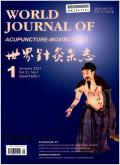Effects of xiusanzhen acupuncture on hippocampal CA1 region damage and microglia activation in rats with vascular dementia: A trigeminal nerve perspective
IF 1.3
4区 医学
Q4 INTEGRATIVE & COMPLEMENTARY MEDICINE
引用次数: 0
Abstract
Objective
This study aimed to observe the effects of xiusanzhen acupuncture (olfactory three-needling therapy) on the behavior, hippocampal histopathology and microglial (MG) activation of rats with vascular dementia (VD), and to assess the role of the trigeminal nerve.
Methods
Sprague-Dawley (SD) rats were randomly assigned to the sham-operation, model, xiusanzhen, and trigeminal neurotomy groups (n = 15 per group). Bilateral common carotid artery ligation was performed to prepare the VD models. Models of trigeminal neurotomy were prepared through the excision of the frontal nerve and infraorbital nerve. Xiusanzhen acupuncture was delivered via electric stimulation. The acupoints selected were bilateral “Yingxiang (LI20)” and “Yintang (EX-HN3)”, and the stimulation parameters were as follows: disperse-dense wave, at a frequency of 2/15HZ and intensity of 1 mA. The course of treatment was once daily, with one course lasting five days, followed by an interval of two days, yielding a total of four courses. Behavioral changes were detected using the Morris water maze, changes in histomorphology in the hippocampal CA1 region were determined with hematoxylin and eosin (HE) staining, and MG activation in the hippocampal CA1 region was detected using immunofluorescence.
Results
The escape latency: From days 3 to 5, the escape latency was higher in the model group compared to the sham-operation group (P < 0.05), but was lower in the xiusanzhen group compared to the model and trigeminal neurotomy groups (P < 0.05). The frequency for platform crossing and swimming distance: both were reduced in the model group compared to the sham-operation group (P < 0.01); and were elevated in the xiusanzhen group compared to the model group and trigeminal neurotomy group (P < 0.01). Hippocampal pathomorphological changes: In the sham-operation group, the morphological structure and nucleoli were well-defined; in the model group and the trigeminal neurotomy group, cell numbers were reduced and karyopyknosis increased; while in the xiusanzhen group, the cell numbers were elevated and karyopyknosis was reduced compared with the model group. MG: the positive rate was higher in the model group compared to the sham-operation group (P < 0.05); lower in the xiusanzhen group compared to the model group (P < 0.05); and higher in the trigeminal neurotomy group compared to the xiusanzhen group (P < 0.05).
Conclusion
Xiusanzhen acupuncture attenuates cognitive impairment in VD rats, inhibits MG activation, and reduces hippocampal tissue damage. Its effects depend on the structural integrity of the trigeminal nerve.
修三真针刺对血管性痴呆大鼠海马CA1区损伤及小胶质细胞活化的影响:三叉神经视角
目的观察嗅三针对血管性痴呆(VD)大鼠行为、海马组织病理学及小胶质细胞(MG)活化的影响,并探讨三叉神经在其中的作用。方法将SD大鼠随机分为假手术组、模型组、修三真组和三叉神经切开术组,每组15只。结扎双侧颈总动脉制备VD模型。通过切除额神经和眶下神经制备三叉神经切开术模型。通过电刺激给针修三真。选取穴位为双侧“迎香(LI20)”和“音堂(EX-HN3)”,刺激参数为:散密波,频率2/15HZ,强度1 mA。疗程为每日一次,一个疗程持续5天,随后间隔2天,共4个疗程。Morris水迷宫法检测大鼠行为变化,苏木精和伊红(HE)染色法检测海马CA1区组织形态学变化,免疫荧光法检测海马CA1区MG活化情况。结果逃避潜伏期:第3 ~ 5天,模型组小鼠逃避潜伏期明显高于假手术组(P <;0.05),但修三贞组较模型组和三叉神经切开术组低(P <;0.05)。与假手术组相比,模型组大鼠过平台次数和游泳距离均减少(P <;0.01);与模型组和三叉神经切开术组比较,修三贞组小鼠肝细胞凋亡率升高(P <;0.01)。海马病理形态学改变:假手术组海马形态结构清晰,核仁清晰;模型组和三叉神经切断术组细胞数量减少,核固着增加;而修三贞组与模型组比较,细胞数量增加,核固着减少。MG:模型组阳性率高于假手术组(P <;0.05);修三真组较模型组明显降低(P <;0.05);三叉神经切开术组较修三贞组增高(P <;0.05)。结论修三真针刺可减轻VD大鼠认知功能障碍,抑制MG活化,减轻海马组织损伤。其效果取决于三叉神经的结构完整性。
本文章由计算机程序翻译,如有差异,请以英文原文为准。
求助全文
约1分钟内获得全文
求助全文
来源期刊

World Journal of Acupuncture-Moxibustion
INTEGRATIVE & COMPLEMENTARY MEDICINE-
CiteScore
1.30
自引率
28.60%
发文量
1089
审稿时长
50 days
期刊介绍:
The focus of the journal includes, but is not confined to, clinical research, summaries of clinical experiences, experimental research and clinical reports on needling techniques, moxibustion techniques, acupuncture analgesia and acupuncture anesthesia.
 求助内容:
求助内容: 应助结果提醒方式:
应助结果提醒方式:


